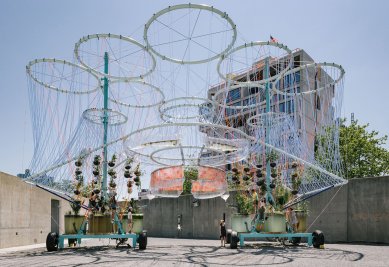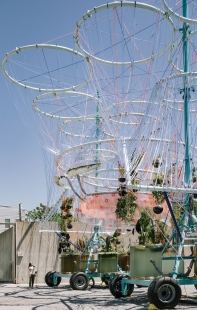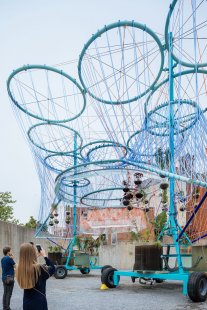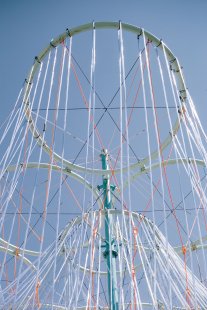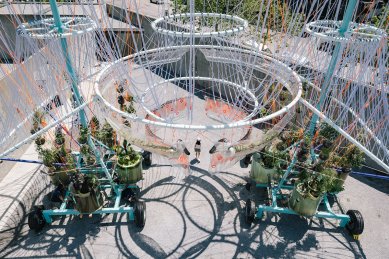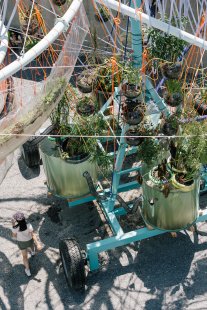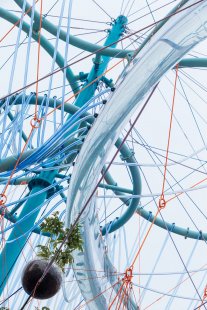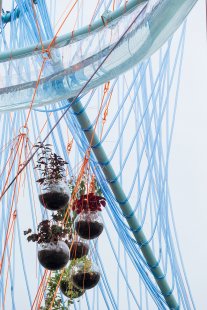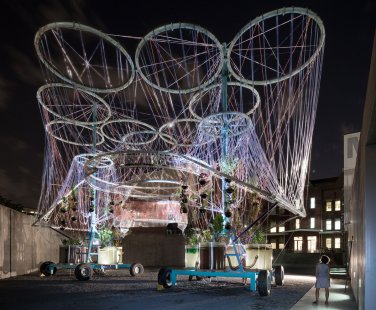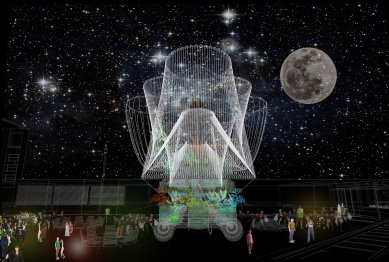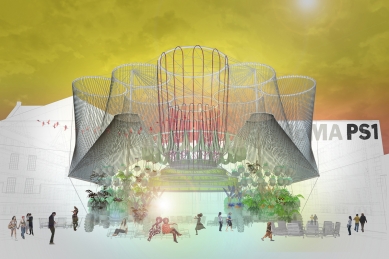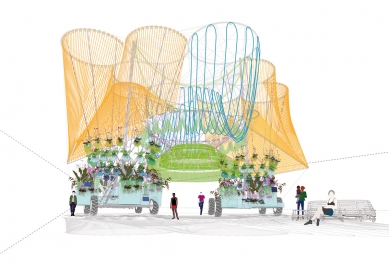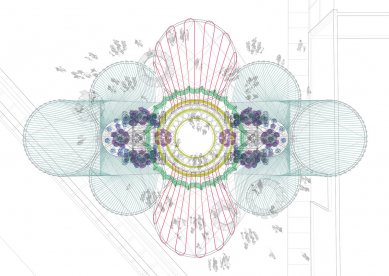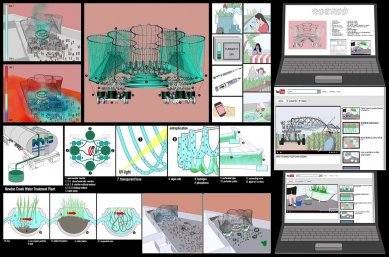
Cosmo - MoMA/P.S.1 2015 Young Architects Program

Inhabitants of New York consume two billion gallons (7.5 million m³) of water daily. The Cosmo project by Madrid architect Andrés Jaque is a mobile exhibit that utilizes commonly available components of irrigation systems to visualize the hidden urbanism of underground utilities on which we are fundamentally dependent.
At the end of June, the sixteenth pavilion commissioned by New York's MoMA for young emerging architects was opened in the courtyard of the P.S.1 gallery. This year's garden installation was created by Madrid native and co-founder of the Office for Political Innovation Andrés Jaque, who currently teaches at Columbia and Princeton Universities.
The colorful sculpture actually represents an ecosystem constructed to clean 3,000 gallons (11.4 m³) of water every four days, removing impurities, nitrates, balancing pH, and increasing dissolved oxygen content.
Cosmo is a response to the UN's grim prediction that in ten years, two-thirds of the world's population will experience a shortage of drinking water. However, beyond moralizing, Cosmo is also a means for communal celebrations. The pale blue object is entirely on wheels and can be easily relocated. Its purpose is to create a pleasant atmosphere that will bring people together. With its rich visual aesthetics, it also resembles a carnival attraction. This makes a sensitive professional topic accessible to a wide audience that primarily seeks entertainment, with the side effect of environmental protection.
At the end of June, the sixteenth pavilion commissioned by New York's MoMA for young emerging architects was opened in the courtyard of the P.S.1 gallery. This year's garden installation was created by Madrid native and co-founder of the Office for Political Innovation Andrés Jaque, who currently teaches at Columbia and Princeton Universities.
The colorful sculpture actually represents an ecosystem constructed to clean 3,000 gallons (11.4 m³) of water every four days, removing impurities, nitrates, balancing pH, and increasing dissolved oxygen content.
Cosmo is a response to the UN's grim prediction that in ten years, two-thirds of the world's population will experience a shortage of drinking water. However, beyond moralizing, Cosmo is also a means for communal celebrations. The pale blue object is entirely on wheels and can be easily relocated. Its purpose is to create a pleasant atmosphere that will bring people together. With its rich visual aesthetics, it also resembles a carnival attraction. This makes a sensitive professional topic accessible to a wide audience that primarily seeks entertainment, with the side effect of environmental protection.
The English translation is powered by AI tool. Switch to Czech to view the original text source.
0 comments
add comment



